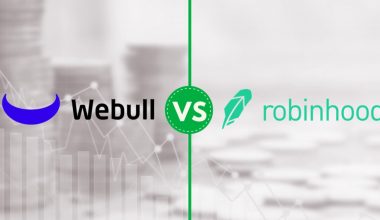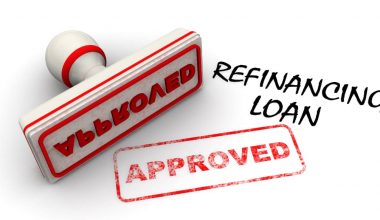Exchange-traded funds (ETFs) are popular among investors due to their low costs and consistent returns. They are an inexpensive way for new investors to diversify their portfolios. On the other hand, fixed-income exchange-traded funds are a type of ETF that may be especially useful if you want to buy government bonds. It doesn’t matter whether you’re a new or seasoned investor.
What is a fixed-income ETF? What is the best fixed-income ETF to invest in? Well, this article will answer many of your questions about fixed-income ETFs. Happy reading!
What Are These Fixed Income ETFs?
An exchange-traded fund that only invests in bonds is known as a fixed-income ETF (also known as a “bond ETF”). A fixed-income ETF only holds bonds, whereas a regular ETF holds a collection of stocks or commodities.
Fixed-income ETFs can hold hundreds, if not thousands, of different bonds. Most fixed-income ETFs will hold only a subset of bonds.
Here are some of the most popular areas of concentration:
#1. The Government securities:
These fixed-income ETFs hold bonds issued by the federal government or by local governments (municipal bonds). Treasury bonds issued by the United States are widely regarded as the most profitable type of government bond.
#2. Corporate bonds:
Some fixed-income ETFs will only contain corporate bonds that large companies have issued.
#3. International bonds:
This fixed income ETFs will contain bonds that foreign governments issue.
#4. Maturity:
Some fixed-income ETFs only hold short-term bonds, whereas others only hold long-term bonds.
Are Fixed-income ETFs a good investment?
Fixed income is an investment strategy that focuses on capital and income preservation. It typically includes investments such as government and corporate bonds, certificates of deposit, and money market funds.
Fixed-income investments can provide a variety of fixed-income ETF returns with potential benefits, depending on your financial objectives, including:
Stock market risk diversification
Fixed income is widely perceived to be less risky than stocks. This is because fixed-income assets are less vulnerable to recessions and other macroeconomic concerns.
You probably have a significant amount of stocks in your portfolio if you want to grow your wealth investments over time to save for retirement or other long-term goals. However, by allocating a portion of your portfolio to fixed-income investments, you may be able to offset losses when stock markets fluctuate.
The capital protection
This entails safeguarding the absolute value of your investment through assets with a stated goal of principal return. Investors nearing retirement may rely on their investments for income.
Fixed-income assets can be a good choice for investors with less time to recoup losses because they typically carry less risk. However, keeping inflation in mind would help, as it can cause your investments to lose value over time.
Generating income
Fixed-income ETF’ investments can assist you in generating a consistent source of income.
Bondholders receive a fixed income at regular intervals through coupon payments. In the case of some municipal bonds, fixed income can be tax-free.
Total profit
Some fixed-income ETF investments have the potential to provide attractive fixed-income ETF returns. Investors can increase their fixed-income ETF returns by taking on more credit or interest rate risk.
Are bond ETFs / fixed-income ETFs a good idea?
Fixed-income ETFs, instead of stock ETFs, are fixed-income funds that allow investors to earn a regular income from interest payments. Many bond exchange-traded funds (ETFs) specialize in municipal, corporate, government, and international debt. Others follow benchmarks like the Bloomberg US Aggregate Bond Index.
Fixed-income ETFs with specific maturity dates can also be purchased by investors.
How Should I Select A Fixed Income ETF?
Fixed-income ETFs, like equity ETFs, provide exposure to a basket of securities, in this case, a basket of bonds. Fixed-income ETFs cover the entire market, from speculative emerging market debt to top-tier US government debt.
Choosing a fixed-income ETF is similar to selecting any other asset class. First, you must determine your targeted exposure and the types of bonds you are interested in. Then, consider the ETF’s underlying securities’ credit ratings and interest-rate risk.
Fixed-income ETFs are broadly classified into four types:
#1. Sovereign
ETFs that target fixed-income security issues issued by sovereign governments, US Treasury, and UK gilts fall into this category.
#2. Corporate
ETFs that invest in corporate fixed-income securities are examples here.
#3. Municipals
These are ETFs that invest in fixed-income securities issued by municipalities in the United States.
#4. Broad Market ETFs
The broad market ETFs are those ETFs that invest in both sovereign and corporate debt.
While selecting a fixed-income ETF, you must also select the geographic exposure you desire. Do you want to invest in securities issued in the United States? Or fixed-income securities issued in the United Kingdom or the European Union? Conventional wisdom holds that growth opportunities exist in less-developed markets but come with additional risks.
It’s also critical to understand how the index that a fixed-income ETF tracks chooses and weighs its holdings. While most fixed-income indexes tracked by ETFs are chosen and weighted based on market value (total outstanding debt issuance), others are chosen based on credit ratings, liquidity, or currency denomination.
What Is The Best Fixed Income ETF?
The iShares fixed-income ETF (core United States Aggregate) is the market’s largest fixed-income ETF, with a $79 billion fund. With over 8,000 total positions, the fund holds bonds from the US market.
It includes federal and local government bonds and corporate bonds issued by small and large businesses. Given its size, it is also the most liquid bond ETF.
#2. ETF Vanguard Total Bond Market (BND)
Vanguard also has a large and well-diversified bond fund with approximately $60 billion in assets. The Vanguard fund has approximately 18,000 positions, which is more than twice the number of positions held by the iShares fixed-income ETF fund mentioned above. It also has a higher proportion of US Treasury bonds, making it less risky.
This riskier bond includes no government bonds and only corporate bonds with higher earnings potential. Anheuser-Busch, CVS, and Microsoft are among the corporate bonds included, so you can be confident that the companies will meet their repayment obligations.
#4. Vanguard Total International Bond ETF (VTI) (BNDX)
Here’s a bond ETF with approximately $30 billion in international bonds. The fund’s highest ratios are Japanese, French, and German bonds, with fewer U.S. bonds. This means that it’s a good bond ETF to invest in if you already have a lot of U.S. holdings.
#5. SPDR Bloomberg Barclays 1-3 Month T-Bill ETF
Longer-term bonds are riskier for investors, so if you have a low-risk tolerance, look for a short-term bond ETF like this one. This fund has a very small portfolio of just over a dozen bonds with maturities ranging from one to three months.
It could be a good option for new investors looking to gain experience in the bond market.
#6. Vanguard Intermediate-Term Corporate Bond ETF (Vanguard) (VCIT)
Interested in investing in higher-yielding corporate bonds rather than low-yielding government bonds? VCIT includes debt from well-known corporations such as Bank of America and Allstate.
At $46 billion, this fund is one of the largest ETFs available. Investors can rest easy knowing that this fund only invests in bonds issued by well-established companies and blue-chip stocks.
#7. Direxion Daily 20+ Year Treasury Bull (TMF)
It’s one of the top bond performers. It takes a three-time leveraged position on the 20-year Treasury bond, aiming to provide high returns to investors. It currently manages assets worth $300 million.
The iShares fixed income ETF involves the United States Government, arguably one of the most consistent and solid investments available on the global market. This ETF invests in treasury bonds that are all 20 years old or older and is a low-risk way to enter the bond market.
What exactly is a convertible bond? An index’s securities can be converted to cash or equity. This is appealing because it reduces the sensitivity of trading prices to changes in interest rates.
iShares (ICVT) provides investors with a convertible bond strategy. Big names like Tesla and Zillow have significant holdings in this bond.
LKOR selects investment-grade bonds at least ten years old using a proprietary scoring method. They only choose bonds issued by companies with at least $500 million in outstanding principal.
FlexShares manages less than $51 million in bonds from Verizon, Home Depot, Citigroup, and other household names.
Conclusion
The fixed income ETFs involve investments in bonds. It only holds bonds, but a regular ETF holds a collection of stocks or commodities.
Some of these fixed-income ETFs can hold hundreds of different bonds, while others will hold only a subset of bonds.
Fixed Income ETFs FAQs
What is the operation of a fixed-income ETF?
Fixed-income ETFs are bond funds whose shares are traded daily on a stock exchange. They specialize in corporate, government, municipal, international, and global debt and funds that track the Bloomberg Barclays Aggregate Bond Index.
How should I select a fixed-income ETF?
Choosing a fixed-income ETF is similar to selecting any other asset class. First, you must determine your targeted exposure, then the types of bonds in which you are interested. The ETF’s underlying securities’ credit ratings and interest-rate risk must also be considered.
When interest rates rise, what happens to fixed-income ETFs?
Rising interest rates cause bond prices to fall, resulting in lower share prices for most bonds and bond funds and capital losses for shareholders.
Do fixed-income ETFs pay dividends?
Fixed-income ETFs pay interest rather than dividends. Non-qualified dividends are typically paid by real estate investment trust (REIT) ETFs (although some may be qualified).
What is the most widely held bond ETF?
The most widely held bond ETFs are:
- Fidelity Total Bond ETF FBND.
- iShares Core Total USD Bond Market ETF IUSB.
- iShares Core U.S. Aggregate Bond ETF AGG.
- SPDR Portfolio Aggregate Bond ETF SPAB.
- Vanguard Tax-Exempt Bond ETF VTEB.
- Vanguard Total Bond Market ETF BND.
Related Articles
- GOOD ETFS TO BUY: Best ETFS for 2023
- Income Funds: Overview and Guide To Income Funds Investment
- SECONDARY MARKET: How to Trade on the Secondary Market
- ETF Portfolio: 7+ Best Dividend Portfolios in 2023
- Debt Capital Markets (DCM): Detailed Guide!






![CLOSED-END FUNDS: MEANING, EXAMPLES & DIFFERENCE [Complete Guide]](https://businessyield.com/wp-content/uploads/2023/04/clo-380x220.png)